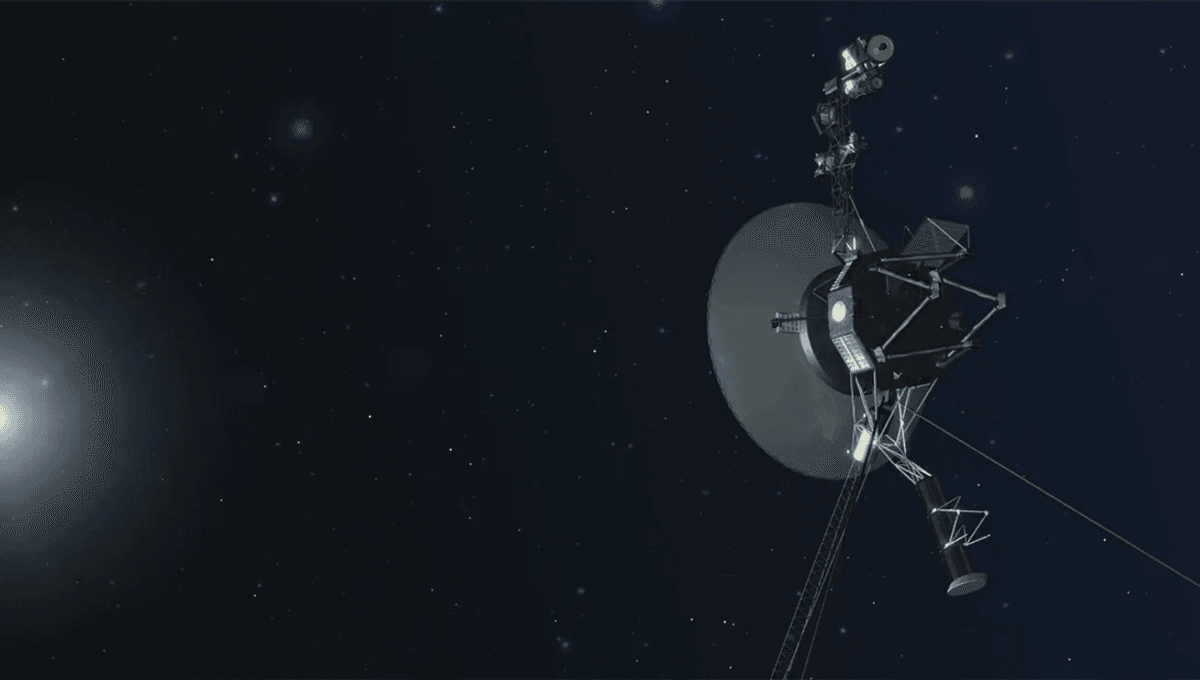
NASA has taken the decision to shut off two more instruments on the iconic Voyager 1 and Voyager 2 spacecraft, in order to extend their missions a little further.
ADVERTISEMENT
NASA’s Voyager 1 and 2 spacecraft have traveled farther away from Earth than any other human-made object, sending back useful science data from the edge of the Solar System. But now, having spent nearly 50 years in space, the spacecraft are showing signs of their age, and coming to the end of their missions.
Recent problems with Voyager 1 have been well documented, with the craft sending back an incomprehensible repeating pattern and needing a change of thrusters, which NASA delivered from 24,630,000,000 kilometers (15,310,000,000 miles) away. Voyager 2 has suffered from similar hiccups, including when a set of commands from Earth briefly (and accidentally) sent the craft pointing 2 degrees away from Earth.
These problems will only grow over the next few years, as the plutonium-powered systems that power the two spacecraft slowly run out of juice. To postpone the moment when the spacecraft become space junk, NASA plans to slowly power down instruments on board.
“The continual decay process means the generator produces slightly less power each year,” NASA explained in 2023. “So far, the declining power supply hasn’t impacted the mission’s science output, but to compensate for the loss, engineers have turned off heaters and other systems that are not essential to keeping the spacecraft flying.”
To keep power going to some of the remaining instruments, NASA has been slowly powering down others.
ADVERTISEMENT
Unfortunately, the time has now come to turn off more instruments on both spacecraft. NASA announced yesterday it has shut down the cosmic ray subsystem experiment on Voyager 1, and will shut down Voyager 2’s low-energy charged particle instrument later this month, on March 24.
“The Voyagers have been deep space rock stars since launch, and we want to keep it that way as long as possible,” Suzanne Dodd, Voyager project manager at JPL, said in a statement. “But electrical power is running low. If we don’t turn off an instrument on each Voyager now, they would probably have only a few more months of power before we would need to declare end of mission.”
The cosmic ray subsystem experiment consists of three different telescopes, which study cosmic rays from the Sun and the Milky Way. The telescopes, which measured the energy and flux of these rays, helped NASA’s Voyager team to determine when Voyager 1 left the Solar System’s heliosphere. The low-energy charged particle instrument, scheduled to be shut down on Voyager 2, takes various measurements of cosmic rays, electrons, and ions from the Solar System and galaxy.
Both of these instruments rely on a rotating platform, powered by a stepper motor providing a pulse of power every 192 seconds. When the probes were first launched, they were tested to go for 500,000 steps, or enough for the missions’ planetary flybys. When it is deactivated on Voyager 2 later this month, it will have completed 8.5 million steps.
ADVERTISEMENT
“The Voyager spacecraft have far surpassed their original mission to study the outer planets,” Patrick Koehn, Voyager program scientist at NASA Headquarters in Washington, added. “Every bit of additional data we have gathered since then is not only valuable bonus science for heliophysics, but also a testament to the exemplary engineering that has gone into the Voyagers — starting nearly 50 years ago and continuing to this day.”
Though disappointing to have to turn off more instruments, doing so ensures power to the three remaining instruments on board each spacecraft, delaying more shut-downs for around a year. Voyager 1’s low-energy charged particle instrument is expected to operate for the rest of 2025, before needing to be powered down. Voyager 2’s cosmic ray subsystem is planned to shut down in 2026.
All going well, the spacecrafts will continue to operate into the 2030s, but given their age there are no guarantees this will happen.
“Every minute of every day, the Voyagers explore a region where no spacecraft has gone before,” Linda Spilker, Voyager project scientist at JPL, added. “That also means every day could be our last. But that day could also bring another interstellar revelation. So, we’re pulling out all the stops, doing what we can to make sure Voyagers 1 and 2 continue their trailblazing for the maximum time possible.”
Source Link: "Every Day Could Be Our Last": NASA Shuts Down Instruments On Aging Voyager Spacecraft